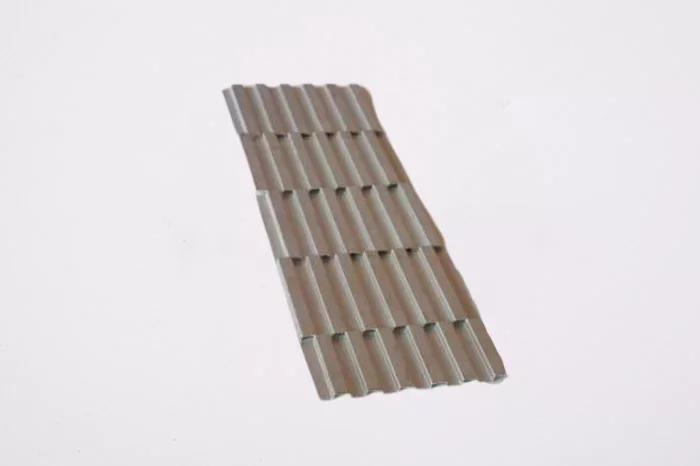The structure of the tube-and-belt radiator: pipe + heat-dissipating belt, the cross-section of the pipe is basically rectangular, the heat-dissipating belt is S-shaped or U-shaped, and the heat-dissipating belt and the pipe are fitted.
The core body of the tube-and-belt radiator is generally distributed in an elliptical aluminum tube and a curved wavy aluminum strip. When the fluid (gas, liquid) passes through the elliptical aluminum tube, heat is dissipated, and heat is transferred to the aluminum strip at the same time to increase heat dissipation efficiency. At present, most automobile heat dissipation cores adopt this structure, which has high heat dissipation efficiency and can effectively reduce the volume and other advantages.

The structure of the plate-fin heat exchanger: usually consists of baffles, fins, seals, and guide fins. Fins, deflectors and seals are placed between two adjacent partitions to form a sandwich, which is called a channel. Such interlayers are stacked according to the different ways of the fluid and brazed as a whole to form a plate bundle, which is the core of the plate-fin heat exchanger.
The core body of the plate-fin radiator is generally shaped as a channel composed of aluminum plates (fins can be added inside) and a right-angled wave-shaped aluminum strip (fin) spaced subdivision, and the fluid (gas, liquid) dissipates heat when passing through the channel. Large-scale construction machinery generally adopts this structure, and the structural strength is relatively high. The pipe belt type has pipelines, and the fluid channel is a single pipeline. Plate-fin type, a fluid channel formed by extrusion and welding of a partition plate and a seal, and fins can be added to the channel.
Advantages of plate fin heat exchangers
(1) The heat dissipation performance of the plate-fin heat exchanger is better: the heat exchange core of the plate-fin heat exchanger is welded at high temperature, and the inner and outer heat dissipation fins and the baffle are welded together. It not only reduces thermal resistance, but also plays a role in secondary heat exchange. Under the same heat dissipation area and other working conditions, the heat dissipation performance of tube-ribbon and plate-fin heat exchangers is obviously better than that of tube-fin heat exchangers. Under the requirement of the same amount of heat dissipation, the heat dissipation area of the plate-fin heat exchanger can be made small and light in weight, and the material consumption is low, so that the cost of a single product is greatly reduced, which is in line with the relevant national policies on energy conservation and environmental protection.
(2) The plate-fin heat exchanger is more reliable: the special structure of the plate-fin heat exchanger determines its high reliability. Through the vibration resistance index of the plate-fin heat exchanger, it fully meets and exceeds the standards of automobile and internal engine radiators, so it is suitable for harsher working environments.
(3) The plate-fin heat exchanger has good pressure resistance: the product structure of the plate-fin heat exchanger adopts inner fins. After the welding is completed, the inner fins not only play the role of heat exchange, but also play a supporting role. The pressure resistance performance index of the plate-fin heat exchanger fully meets and exceeds the standards of automobile and internal engine radiators.
(4) The plate-fin radiator has good corrosion resistance: due to the adoption of new raw materials and the overcoming of the core welding problem, the corrosion resistance of the radiator is greatly improved.
Radiator fin manufacturer
There is an excellent radiator fin manufacturer, Sanqian Technology Co., Ltd., which sells high-quality radiator fins. If you want to know more about folding fins, or are interested in our products, you can visit the website of Sanqian Technology Co., Ltd.